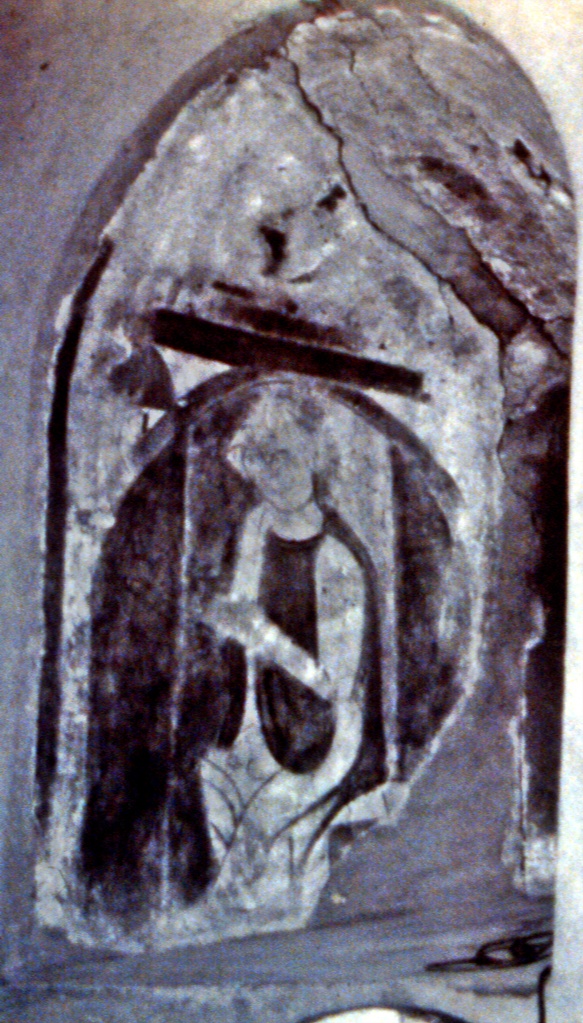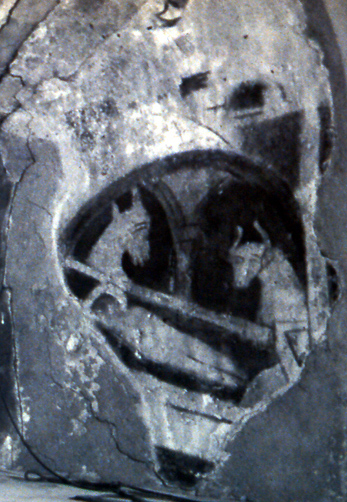Little Wakering, Essex (†Chelmsford) C.12
Unidentified Bishop (once thought to be St Denis)
Nativity, with Ox and Ass

EW Tristram suggested, very tentatively, that this bishop, wearing the rather shallow-crowned mitre typical of some paintings of bishops in 12th century episcopal dress, was St Denis, (patron saint of France and of Paris in particular) “represented seated, holding his head in his lap (?)”¹

I think the photograph at the right is clear enough to show that the figure is not in fact holding his head in his lap, but has it firmly enough on his shoulders. It is not difficult, though, to see how the confusion came about – inverting this photograph, as at the right, with salient details shown in green, will show what might well be mistaken for a face framed by a triangular mitre, with two ‘eyes’ on the lap of the figure’s robe, as if mirroring his mitred head. But what the figure at Little Wakering is holding seems to be, rather less exotically, a book, and there are traces of an episcopal crozier or pastoral staff at the far left. The “severed head” illusion is adventitious, a chimera.

But Italian-born Denis was indeed beheaded, along with his evangelising companions, in about 250CE. His body was thrown into the Seine, but retrieved later, and the Abbey of Saint Denis was built over his final resting place. Some versions of his legend have him picking up his head and walking away with it, but if this aspect of the story passed into medieval art I can find no examples of it. Denis is usually shown as a dignified, if decapitated, figure holding his head in front of him, as in this carving on the portal of a church in Vendée, France² [photo © Dr Michael Lastinger, University of West Virginia]. Denis is the third figure from the left (and possibly also the figure furthest left, shown before his decapitation), flanked by angels.
In short, I do not think this bishop is St Denis. He could be almost anyone, but the presence in the opposite window splay of a Nativity, showing a very endearing Ox and Ass looking at the tightly-swaddled Christ Child suggests St Nicholas as one possible candidate, or perhaps St Martin of Tours.
At all events, it is a very ancient painting in an even more ancient church, and even though virtually all the colour has faded to monochrome in the salt air it is certainly worthy of careful preservation. There are many more paintings of saints, and links to their pages, in the table below.
¹ Tristram 1, p.88